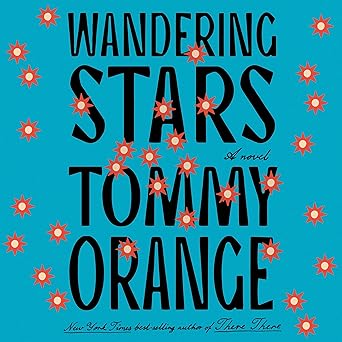
This novel weaves together three generations of a family's history, tracing the legacies of the Sand Creek Massacre of 1864 and the Carlisle Indian Industrial School through their experiences. The story begins with Star, a young survivor of the massacre, who is brought to the Fort Marion prison castle as a child. There, he is forced to learn English and practice Christianity by Richard Henry Pratt, the same man who would go on to found the Carlisle Indian Industrial School. This institution's sole purpose was to erase Native American history, culture, and identity, and its dark legacy continues to shape the lives of generations to come.
As we follow this family through the years, we see the scars of their past inflicted on future generations. Charles, Star's son, is sent to the school, where he is brutalized by the very man who was once his father's jailer. Yet, even amidst such trauma, we witness moments of hope and resilience. Charles clings to his memories of Opal Viola, a fellow student he shares brief, fleeting moments with in the school's bleak halls. These tender encounters offer a glimmer of a future beyond the institutional violence that haunts their family's bloodline. Yet, even as we glimpse a way forward, the weight of trauma is felt across the generations, and the fragility of hope is repeatedly tested.
Through the lens of this one family's story, Tommy Orange lays bare the long-lasting impact of historical trauma, revealing the intricate web of pain, grief, and survival that binds them together. This is a novel that traverses the past and future, expositing the connections between ancestral legacies and the ongoing struggles of contemporary Native American communities. With unflinching compassion and piercing insight, Orange confronts the darker aspects of American history, reimagining a past that has been silenced and obscured. The result is a masterpiece that will leave readers moved, haunted, and, ultimately, hopeful.
The book is a beautifully written story that weaves together the lives of three generations of a family, spanning over a century. It's a heartbreaking tale that delves into the dark past of the Sand Creek Massacre of 1864 and the Carlisle Indian Industrial School, highlighting the brutal treatments and forced assimilation of Native American children. The story begins with a young boy, Star, who is taken from his family and sent to the Fort Marion prison castle as a child, where he is forced to learn English and adopt Christianity. This traumatic experience sets the tone for the rest of the family's history, and the weight of this past is felt across the generations.
As I read this book, I couldn't help but think of my own experiences growing up in a predominantly white community, where I always felt like an outsider. The author masterfully captures the sense of disconnection and longing that comes with being part of a community that doesn't fully understand or accept you. The characters in this book are so complex and multi-dimensional, with their own struggles and triumphs. I felt a deep connection to Opal Viola, who becomes a symbol of hope and resilience in the face of overwhelming adversity. Her story is a powerful reminder that even in the darkest of times, there is always a chance for human connection and understanding.
This book is a masterpiece that lays bare the long-lasting impact of historical trauma on families and communities. The author's writing is raw, honest, and unafraid to confront the darker aspects of American history. As I finished reading this book, I felt moved, haunted, and hopeful. I couldn't help but wonder about the survivors of the Sand Creek Massacre and the Carlisle Indian Industrial School, and the generations that followed. The book is a testament to the power of storytelling and the importance of amplifying the voices of marginalized communities. It's a must-read for anyone looking to understand the complex and often painful history of Native American communities in America.
Rating: 3.5 / 5.0
This novel is a heart-wrenching and powerful exploration of the long-lasting impact of historical trauma on families and communities. The author masterfully weaves together three generations of a family's history, tracing the legacies of the Sand Creek Massacre and the Carlisle Indian Industrial School through their experiences. The story is a beautifully written tale of resilience and hope, highlighting the connections between ancestral legacies and the ongoing struggles of contemporary Native American communities. The writing is raw, honest, and unafraid to confront the darker aspects of American history, leaving readers moved, haunted, and hopeful. The author's compassionate and unflinching portrayal of trauma and survival is both a testament to the power of storytelling and a call to action for amplifying the voices of marginalized communities.